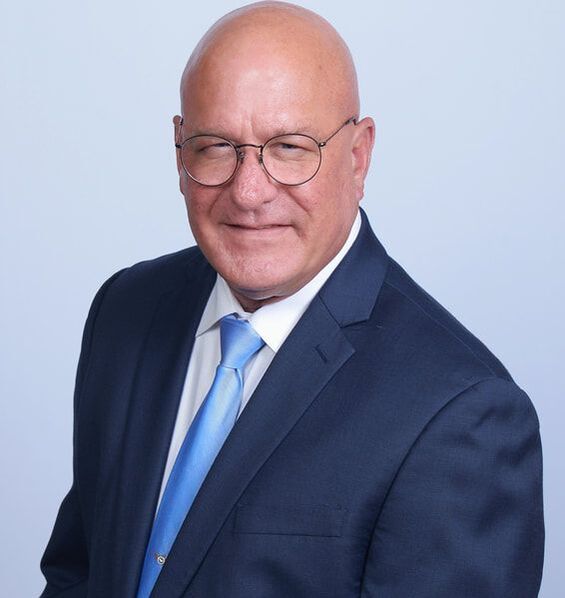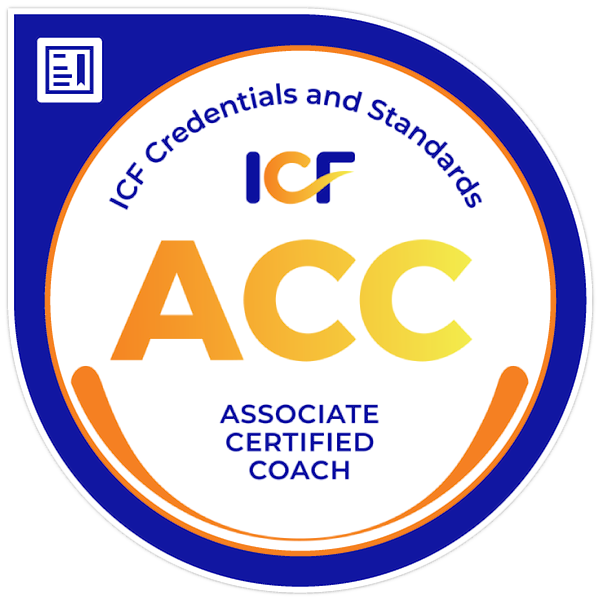|
Who doesn't want to make their dreams come true? A rhetorical question? Of course. We all want to make our dreams come true. Some people achieve their dreams and goals. Some do not. Others only partially realize their dreams or find themselves meandering—sometimes towards and sometimes away—from their dreams. What makes the difference? Our quote from Dr. Greg Reid gives us a quick, three-step answer:
Variations on his theme are plentiful. Most of us are familiar with the SMART goal variation. And, who hasn't had to create an action-plan for a project or change initiative? Positive psychology also offers some strong evidence-based strategies to help us "do" goal-setting well. Involve Others Another common strategy is to involve others; like those who have succeeded at achieving a dream or a goal similar to yours. Somebody has already been there and done that. But you have to find that someone and they have to be willing to invest in you. Engage with a Coach What's amazing about engaging with a skilled coach is that your coach doesn't have to be an expert on your issues, dreams, or goals. They need to be an expert at coaching. Strong coaches adhere to principles, standards, behaviors, and processes that work. I answer the question, "Does coaching work?" in my video, The Coaching Process, on my coaching page. Check it out. It runs about six minutes. A coach empowers you to discover, strategize, action-plan, and then hold yourself accountable (sometimes with the help of others) for making your dreams come true yourself. It's time to make your dreams come true. Impactful change starts with a conversation! Schedule your FREE, 1-hour discovery session now, click here: Discovery Conversation Calendar
Interested in learning more? Click below to watch Alan's introduction video and learn about his passion for helping others and his qualifications as a coach. You can also discover more about coaching and what a coaching session is like. Just click here: Coaching with Alan Alan maintains the ethics and standards of behavior established by the International Coaching Federation (ICF), including the standards regarding confidentiality. You can learn more about them on the ICF website.
0 Comments
Indeed, some scholars have suggested that communicating purpose is the most central of all leader behaviors, because it infuses work with meaning and direction. ~ Andrew Carton, Chad Murphy, & Jonathan Clark ~ Scholars aren't the only ones touting the importance of meaning, purpose, and vision. John Maxwell said, "Vision is everything for a leader." Simon Sinek skyrocketed into fame after his How Great Leaders Inspire Action TEDTalk, better known by its best-selling book counterpart, Start With Why. And so many other leadership experts point out the importance of meaning, purpose, and/or vision. The professionals we lead want meaning, purpose, and vision at work. For example, a 2021 McKinsey article reports that nearly two-thirds of US-based employees said that the pandemic has caused them to reflect on their purpose in life. The authors say, "Employees expect their jobs to bring a significant sense of purpose to their lives. Employers need to help meet this need, or be prepared to lose talent to companies that will." If you have a retention problem, consider the possibility that your ability to clearly and effectively communicate purpose and vision may be one contributing factor. Employees value meaningful work. How much? A BetterUp Labs report, Meaning and Purpose at Work*, states that 9 out of 10 career professionals--that's 90%—told researchers that they would sacrifice 23 percent of their future earnings—an average of $21,000 a year—for "work that is always meaningful." That's about as much as most people pay for their mortgage or rent in a year! Almost 50 years ago, neurologist, psychiatrist, philosopher, author, and Holocaust survivor, Victor Frankl, founded logotherapy with the premise that our primary motivational force is to find meaning or purpose in life. Abraham Maslow identified that self-actualized people all had in common a devotion to a life purpose or calling. And more recently, Marty Seligman, the father of positive psychology, lists in his book, Flourish, the five core elements of flourishing. Purpose is one of them. Purpose, meaning, and vision at work and in our lives is important. Clarity of vision makes a difference. What drives clarity may surprise you. It's no secret that a clear vision drives alignment and the quality of work outcomes and that greater meaning and purpose for workers drives engagement and retention. So, it is imperative that leaders influence employees, not only to acquire a sense of purpose, but a shared purpose--a sense of purpose that is seen and interpreted by different members in the same way. When we have specific goals and strategic aims, we don't need each individual interpreting what that is differently. A shared purpose drives alignment in culture, outcomes, and strategic goals. How do we most effectively and clearly communicate that to drive successful performance outcomes? Like me, you may assume that you communicate vision pretty clearly. When I came across a 2014 study on the topic, I discovered that I may not be using the most effective communication strategies for communicating vision and that I may actually, although inadvertently, be contributing to a blurry vision—what the authors called a "blurry vision bias." The findings could radically change how you communicate vision, too. What you don't know actually can hurt you, your team, and ultimately, your customers. Imaged-based words and conceptual words. The mind is structured into two systems for processing phenomenon. The first system encodes concrete information about our external reality through our senses. True to the very definition of the word vision, image-based words are part of this system and create a 'verbal portrait' that can be seen in the 'minds eye.' Psycholinguistics and cognitive psychology suggest that image-based words include:
Strong imagery promotes the shared aspect of a vision—when we want people aligned and all on the same page. Think Martin Luther King, Jr.'s famous "I Have a Dream" speech. The second system processes higher-order conceptual representations as logic and meaning—how things are classified and fit together. The words customer and enjoy above are more conceptual and different people will interpret them differently. Values—including organizational values—are the same. Standing alone and without reference, they are subject to different interpretations. And when you start stacking them one on top of the other in a vision, it just muddies the waters even more. The problem is that while previous research was clear that both image-based words and values are necessary to create strong shared visions, until now however, we didn't know the best ratio or combination that drives better results. So, what's the answer? The researchers discovered that in order to create a strong imagery effect for a vision (the shared part), leaders need to use a large number of image-based words and four or fewer values or conceptual words—and the closer to one value or conceptual word they got in their vision, the stronger the effect became. Most importantly, this combination led to greater performance quality. In other words, a large number of image-based words and fewer conceptual words led to better final results collectively. People aligned and stayed on the same page to drive similar, higher-quality results. The authors state, "performance is boosted by leader rhetoric comprised of image-laden words and four values or less." Most leaders exhibit a “blurry vision bias” in which they provide conceptual (rather than concrete) visions and then communicate a large number of values that further obscures the vision. When communicating a vision, we need to turn that around. Look at the simple examples used in the study: Weak imagery condition: “Our vision is that our toys—all of them made to perfection by our employees—will be enjoyed by all of our customers.” Strong imagery condition: “Our vision is that our toys—all of them crafted flawlessly by our workers—will make wide-eyed kids laugh and proud parents smile.” Despite the widespread attention given to the importance of a shared purpose, it is the rare leader who successfully establishes it. You are now better equipped to be one of those rare leaders who more effectively and clearly communicates vision and purpose. *If you want something more succinct, this 2019 SHRM article provides a very nice summary of the BetterUp Labs report. Impactful change starts with a conversation! Schedule your FREE, 1-hour discovery session now, click here: Discovery Conversation Calendar
Alan maintains the ethics and standards of behavior established by the International Coaching Federation (ICF), including the standards regarding confidentiality. You can learn more about them on the ICF website. Should you ever find yourself on your path, moving along in spite of fear, wondering if you're ready or not to rise to the next level, chances are great that you will not be ready. Rise anyway. You see, wondering means you're not ready, doing means you are. ~ The Universe (aka, Mike Dooley) ~ Wondering or doing? If you want to rise to the next level of your leadership, Mike warns us about simply wondering about it and to just take that next step and do it, already. One way a lot of leaders are taking that next step is by engaging with a skilled coach. According to iPEC, 1.5 million searches are made every month by people and companies looking for life coaches, business coaches, and executive coaches and that 33% of all Fortune 500 companies use executive coaching as standard leadership development for their elite executives and talented up-and-comers. But is it worth it? I answer the question, "Does coaching work?" in my video, The Coaching Process, on my coaching page. But what about the expense of coaching? What's the ROI? According to the 2009 ICF Global Coaching Client Study :
The iPEC report mentioned above states that figures of between 500% and 700% commonly reported as being a reliable ROI for executive coaching. So are you still wondering about coaching or are you ready to do something about it? Impactful change starts with a conversation! Schedule your FREE, 1-hour discovery session now, click here: Discovery Conversation Calendar
Alan maintains the ethics and standards of behavior established by the International Coaching Federation (ICF), including the standards regarding confidentiality. You can learn more about them on the ICF website. Like an athlete who seeks out a coach to up their game, successful leaders engage with a skilled coach to elevate their leadership. Myth: Executive and leadership coaching is for ineffective, problem leaders, or at best, for leaders with a problem. Fact: Highly successful people and leaders, such as Steve Jobs, Oprah Winfrey, and Bill Gates, have all had coaches. In the LinkedIn article, These 21 Highly Successful People Had Coaches—Find Out Why, Bill Gates is quoted as saying, "Everyone needs a coach. We all need people that give us feedback. That’s how we improve." Athletes have sports coaches, professional writers have editors, and singers and actors have voice coaches. Why should a business leader be any different? Here are just a few reasons that strong leaders engage with a coach: 1) Gain a neutral, outside perspective. Sometimes, we just get too involved and way too busy and we can't see the forest for the trees. Strong leaders recognize that gaining a fresh, outside perspective from a coach can yield new insights that lead to more effective strategies, actions, and achievements. A coach is there to partner with you in gaining clarity so that you can strategize more effectively towards achieving your goals. Developing and gaining a more accurate and clear perspective is important since an accurate perspective is highly associated with achieving success for leaders, teams, and organizations. As the American philosopher, psychologist, and educational reformer John Dewey famously said, "A problem well-defined is a problem half solved." 2) Increase confidence. Sometimes a leader lacks confidence in his or her skills and abilities. They may be unaware of the potential positive impact these could have. They may be missing opportunities to be more effective. A coach helps identify strengths and capabilities and then partners with the leader in developing strategies and an action-plan for leveraging those strengths. 3) Elevate a skill or competency. Somehow it's easy to accept that even the best athletes are constantly working on improving their skills by enlisting trainers and coaches and yet, when it comes to our own leadership skills, we may feel like we've got to do it all on our own. Well, you don't. That kind of thinking may even be self-defeating—especially if you've been trying to elevate a skill or competency and you're not getting the traction or success you envisioned. A coach can help you clarify where you are versus where you want to be. The coach helps you identify issues and obstacles, and works with to you identify resources, strategies, and steps to effectively get you there. 4) Achieve goals. Ultimately, we want to be effective and successful—and that means achieving our goals and dreams. Sometimes it's difficult to clearly articulate our vision into a working and realistic plan. Working with a coach can help translate an overall vision into smaller, obtainable steps. Research clearly indicates that coaching has a significant and positive impact on goal attainment. A coach can help you achieve yours. Impactful change starts with a conversation! Schedule your FREE, 1-hour discovery session now, click here: Discovery Conversation Calendar Alan maintains the ethics and standards of behavior established by the International Coaching Federation (ICF), including the standards regarding confidentiality. You can learn more about them on the ICF website. |
Alan Mikolaj
Alan Mikolaj is a a professional, experienced, positive, and passionate speaker, leadership and organizational development consultant, change agent, author, and coach. He holds his Master of Arts degree in Clinical Psychology from Sam Houston State University. He is a certified graduate coach from Coaching Out of the Box and holds his ACC and membership with the International Coaching Federation (ICF). Free Discovery Conversation!
Impactful change starts with a conversation! Schedule your free, one-hour session by clicking here: Discovery Conversation with Alan
Or call or email: Contact Page In his third book, A Travel Guide to Leadership, Alan offers you simple, fundamental, and powerful lessons that have the power to transform you, your relationships, and your career.

Blog Archives
July 2024

Linked2Leadership
Ranked #1 Business Blog! |
|
CONTACT
TEL: 346-291-0216 EMAIL: [email protected] SCHEDULE TIME WITH ALAN Free Discovery Conversation with Alan |











